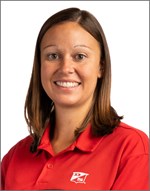What causes Green Stem Syndrome? Fall Considerations For 2022 Alfalfa Stands
BY Dairyland Seed Agronomy Team
GREEN STEM SYNDROME
Every few years this becomes a hot discussion topic. As we are in the middle of soybean harvest, this topic is of interest again in certain areas of the Dairyland Seed footprint.
Currently, there is still a bit of uncertainty as to the exact cause. It was originally thought that diseases such as Pod mottle virus vectored by feeding from aphids or stink bugs could cause this issue.
What causes Green Stem Syndrome? There are several possibilities. Each can be caused by different agents. Potential causes are mutated plants, environmental conditions, viruses, and insect feeding. This year it seems to be more related to environmental conditions.
- There is the mutated or rogue plant theory that can produce green stems, but only on a very few scattered plants and they have very few pods and very few beans per pod. Again, this won’t be on a field-wide basis, but rather only scattered few plants.
- Some Universities have data to prove the virus theory, but that may not be the case either.
- Given this growing season, environmental conditions are most likely the case. If soybean pod set was less than we had plant resources for, and then we had great or very good conditions late season, we can get green stems. Basically, we have excess plant resources and the plant stays green longer. Many agronomists refer to this as “sink and source”. We have more “sources” (plant sugars etc.) than we have a “sink” (soybeans) for them to go. One observation to support this was where one row had a limited population from a planter issue. Those plants with less inter-plant competition stayed greener for a greater period of time.
FALL ALFALFA CONSIDERATIONS
For stands that will be kept for 2022
With maybe one exception, your fall management plans for alfalfa stands that will carry into 2022 should be complete. The final cut should take place at a point in the season that will allow for 8 inches of regrowth; ensuring that root energy reserves have been replenished after the stress of cutting. Hopefully, you have also maintained adequate fertility levels through the season. One dry ton of alfalfa removes about 15lbs of P2O5, 60lbs of K2O, 30lbs of Ca and 5lbs of S from the soil. Alfalfa fertility can be a deal breaker for winter survival, stand longevity, yield and forage quality.
What’s the exception? You can cut alfalfa right at the time of frost and still preserve root energy for winter survival. We don’t need to wait until heavy frost to harvest, we just don’t want much (or any) regrowth that will steal energy from the root system. Your local forecast is the indicator here. A light frost (29 degrees or higher) will only kill the tops while the crown will keep growing and continue making fresh forage. A heavy frost (27 degrees or lower for two to four hours) that ‘kills’ the crown will halt growth. Go harvest before you have too much leaf drop, which sacrifices quality.
Lastly, we should always assess stands in the fall to plan for potential replacement and help us establish a baseline going into winter. We have touched on stand assessment in multiple newsletters in the past.
For stands that will be terminated for 2022
Assess stands based on age first, starting with the oldest. Many operations automatically rotate to corn after three or four years, others simply let a stand exist as long as needed. Will that stand hit the magic number of 40 stems per square foot in the spring?
If a stand is to be terminated, first decide on timing. Many have learned how to no till corn into alfalfa residue the following season with great success, avoiding the multiple tillage passes that might still leave tough planting conditions. Just be sure to terminate alfalfa at least two weeks prior to planting and wait for perfect soil conditions.
While we focus on the manuring opportunities in rotating out of alfalfa, don’t forget about the nitrogen credits that come from a mature alfalfa stand. 8” of regrowth on the alfalfa prior to termination can deliver the majority of your nitrogen needs for the following year’s corn crop.
JOIN THE DAIRYLAND SEED ELITE PRODUCER CLUB
You can be a member of Dairyland Seed’s Elite Producer Club by submitting photos or testimonials of high performing products! Simply test a picture or testimonial of your high performing products to 913-DS-YIELD or 913-379-4353. The program runs from August 15 through December 1, 2021.
Participants will receive a free Dairyland Seed t-shirt (one per entry) and “Elite Yield Club” Certificate. All corn grain, corn silage and soybean products are eligible.
Qualifying products for “Elite Yield” Contest (one winner per family, per region, prize is 3 free units of product that was entered):
Region 1 = DS-3366 family; DS-3550 family; DS-4018 family
Region 2 = DS-3550 family; DS-4018 family; DS-4878 family; DS-5144Q
Region 3 = DS-4310 family; DS-4878 family; DS-5144Q
Region 4 = DS-3366 family; DS-3550 family; DS-4014Q; DS-4310 family
Information required in text: Participant; Location; Product; Yield in Bushels or Tons; T-Shirt Size; DSM; Mailing address if different than participant.
2021 YIELDMASTER CONTEST
Fall harvest kicks off the annual Dairyland Seed Corn, Silage and Soybean Yieldmaster Contest. Take a moment to enter your outstanding yields and you just might be our 2021 winner!
Seed Credits for Winners
- The National Corn, Soybean and Silage Yieldmasters will each receive a $2500 seed credit.
- First Place Corn, Silage and Soybean winners from each zone receive a $1000 seed credit.
- Second Place Corn, Silage and Soybean winners from each zone receive a $500 seed credit.
Entries can be submitted online at www.dairylandseed.com or via your DSM who can submit your entry using the iPad app. Silage entries are due November 3, 2021. Corn and Soybean entries are due December 3, 2021.
 |
 |
 |
 |
 |
| Brian Weller Western Region 507.456.3034 |
Dan Ritter Central Region 219.863.0583 |
Branden Furseth Northern Region 608.513.4265 |
Mark Gibson Eastern Region 260.330.8968 |
Amanda Goffnett Eastern Region 989.400.3793 |
